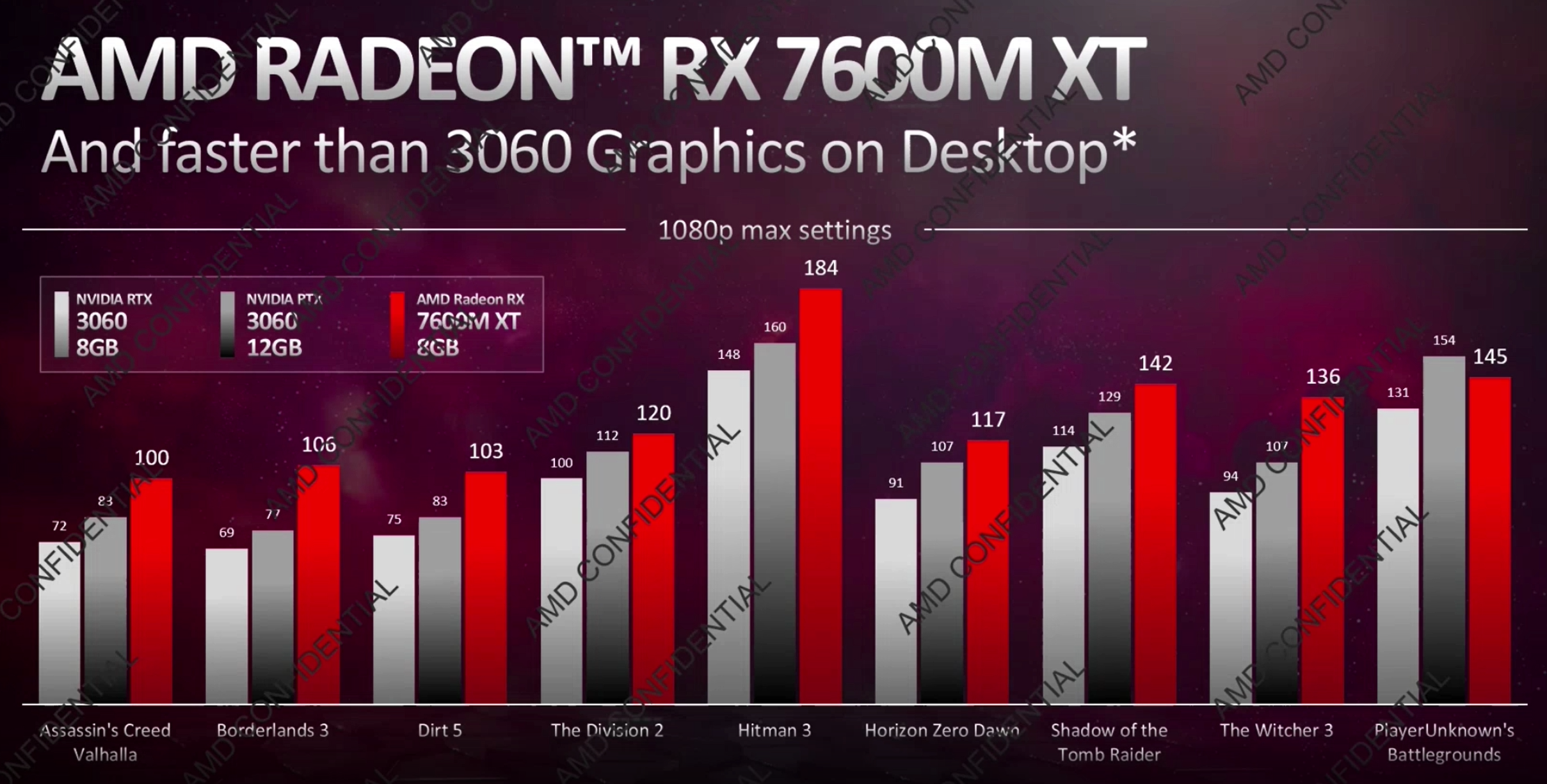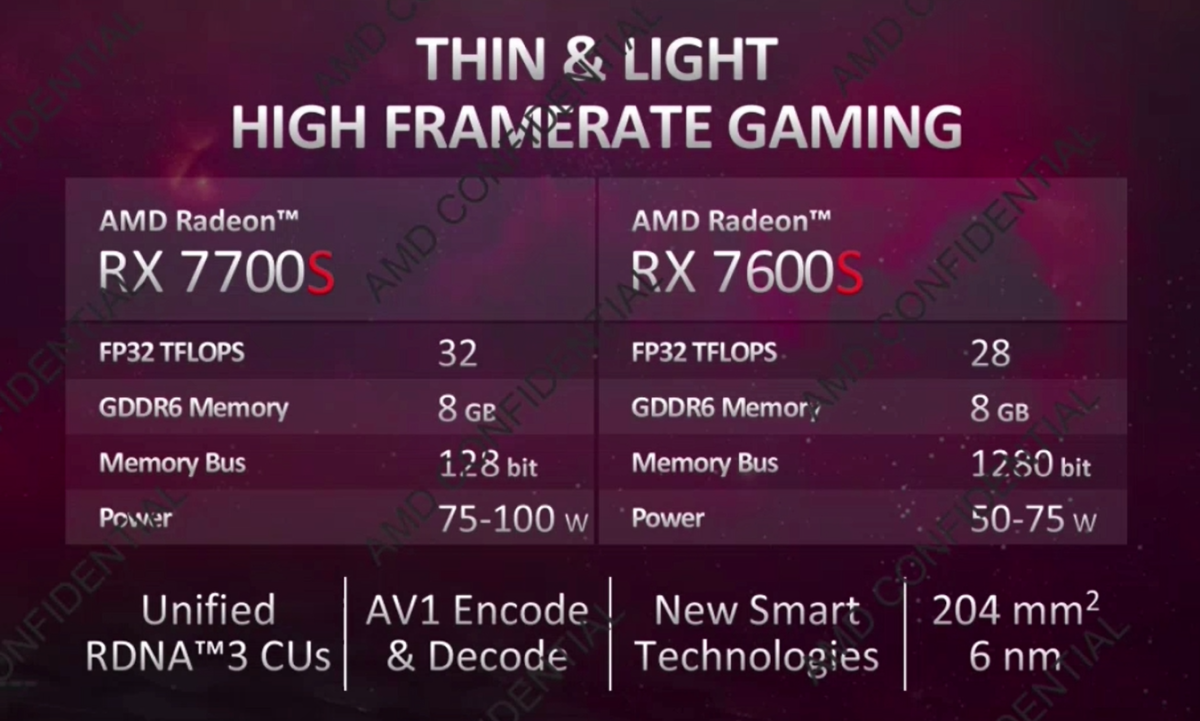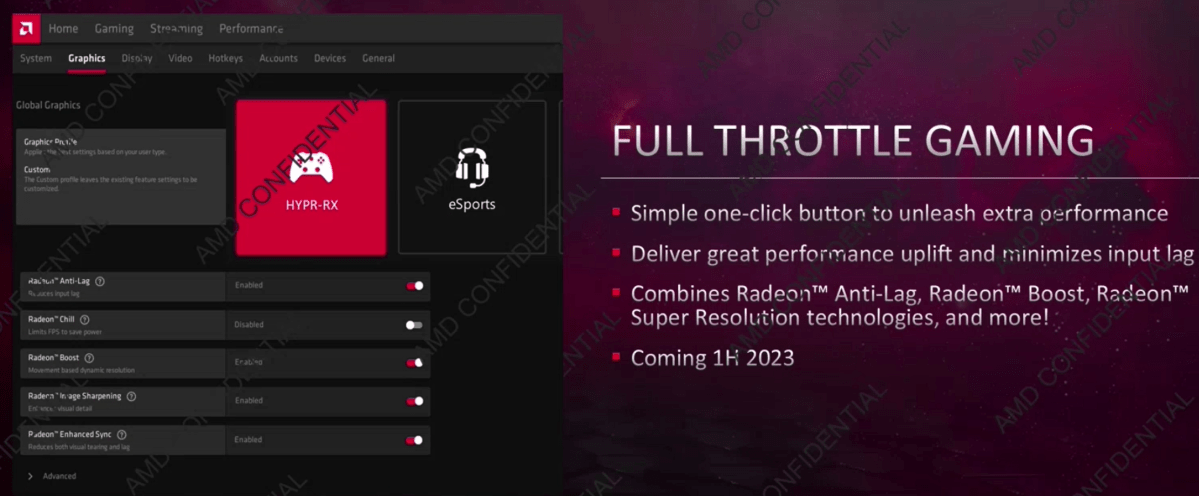RDNA3 comes to laptops: AMD’s Radeon 7000 GPUs pack clever software tricks
Not to be outdone by Nvidia, AMD’s graphics business opened CES with four new mobile RDNA3 GPUs, along with upgrades to the accompanying graphics technologies.
AMD launched the Radeon RX 7600M XT and RX 7600M, both GPUs pegged at improving 1080p gaming on laptops. The complementary Radeon RX 7770S and RX 7600S are aimed at thin-and-light laptops with up to 100W of power consumption. AMD also announced two upcoming software technologies: HYPR-RX, a master control of sorts to enable all of AMD’s gaming features, as well as SmartShift RSR, which will help balance upscaling technology on supported laptops.
Whereas Nvidia announced the RTX 4090/4080 GPUs for laptops without much accompanying detail, AMD did a bit better. Still, we’re left wondering on some of the key details.
AMD announced the last-gen Radeon RX 6600M, 6700M, and 6800M in May 2021. The RX 6600M included 8 compute units/ray accelerators, 8GB of GDDR6 memory, a game clock of 2,177MHz, 128-bit memory interface, and 32MB of Infinity Cache.
AMD
All we know about the RX 7600M XT and RX 7600M is that they’re a step up to the RDNA3 architecture. The RX 7600M XT includes 8GB of GDDR6 memory across a 128-bit memory bus, with 32 TFLOPS of FP32 power. The RX 7600M offers the same memory and bus width, with 28 TFLOPs instead. However, we don’t know the number of compute units/ray accelerators, nor the game clock. (In the RX6600M, they were 28 CUs and 2,177MHz, respectively.)
From a performance standpoint, however, there are some clear advantages: the 7600M XT is 26 percent faster across popular gaming titles, according to AMD. AMD is also claiming that the 7600M XT is faster than both the RTX 3060 8GB and 12GB variants, as well.


Meanwhile, the RX 7700S and 7600S have similar designs; they too are both offered with 8GB of GDDR6 memory and a 128-bit memory bus. The RX 7600S includes 28 32-bit TFLOPS, while the 7700S can perform 32 TFLOPS.
The new mobile GPUs will be built into the Alienware M18 and M16, the Asus TUF Gaming A16, the Emdoor APX970 and AG958GP, and the IP3 ARN37A.

AMD
Naturally, AMD believes that its new GPUs offer substantial advantages in thin-and-light laptops. AMD compared the new GPUs to the older 6700S.
Interestingly, all four of the new GPUs consume the same die space and use the same process technology.

AMD
New software enhancements en route
All four GPUs will include support for AV1 hardware encode and decode, AMD noise suppression, and content-adaptive machine-learning and AI visual analysis to help preserve text, according to Aaron Steinman, senior manager of Radeon product management at AMD.
Three additional software technologies are worth noting. In the first half of 2023 AMD will ship SmartShift RSR, a technology that will free discrete GPU resources but offloading any upscaling calculations to the APU, Steinman said. AMD FidelityFX Super Resolution (FSR) will launch a 3.0 version that will offer enhancements like better upscaling and fluid motion frames. Finally, AMD Software will support HYPR-RX, a one-button control that combines Radeon Anti-Lag, Radeon Boost, Radeon Super Resolution, and more, Steinman said — flipping on HYPR-RX will turn these features on, too. They’ll be available sometime in the first half of 2023, AMD said.

AMD
For all the latest Technology News Click Here
For the latest news and updates, follow us on Google News.
